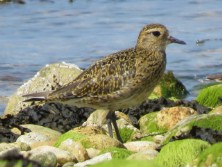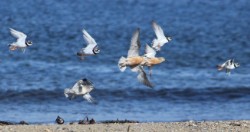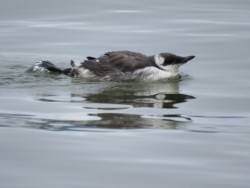August 2020
Bird Sightings
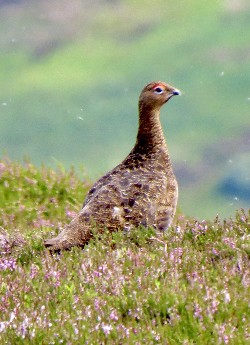
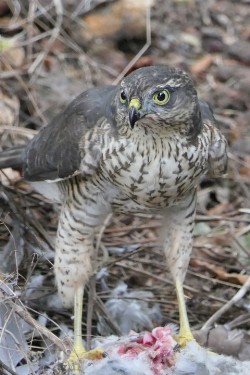
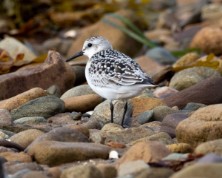
August was warmer than July but wetter. The mean temperature was 1.6 degrees higher and the rainfall was 16% more. In comparison to last August the mean temperature and rainfall were very similar. Last August there were 24 days of rain whereas this August there were 20 days of rain and on two of those days there were “named” storms. Towards the end of the month there was more than a hint of the approach of autumn.
Having said that this, summer visitors were still to the fore including: nine Sand Martin in Glen Catacol on 1st, a Willow Warbler on Clachaig Farm on 2nd, four Whinchat on Sliddery Shore also on 2nd, a Swift over Largybeg on 3rd, two Sedge Warbler at Clauchlands on 10th, three Chiffchaff at Silver Sands on 18th, three Common Sandpiper at Drumadoon Point on 23rd, a Spotted Flycatcher at Mossend Pond on 24th, two Whitethroat on Cleats Shore on 30th and the largest groups of Swallow and House Martin reported so far were twenty-five Swallow at Kilpatrick on 12th and one hundred House Martin at Shannochie on 29th. Please try to give me your last record for Swallow and House Martin this year. Last year there were October records for both species.
From information received, Swallow had an average breeding season while House martin had a good one. Other signs of successful breeding this month included: young Black Guillemot off Imachar on 2nd, a pair of Mute Swan with five large young at Blackwaterfoot on 7th, family groups of Red-throated Diver off Drumadoon on 18th, young Guillemot off Pirnmill on 23rd, young Little Grebe on Mossend Pond on 24th and on 29th and 30th on Cleats Shore large flocks on finches including two hundred Linnet, thirty Lesser Redpoll and two hundred and fifty Goldfinch, all with many young birds. As well as this, there were widespread reports of young birds at garden feeders. The success of these small birds may have influenced the success of predator species like Sparrowhawk. There were widespread reports of young Sparrowhawk in August. Unfortunately, a number of these had to be taken into care following window strikes.
In August, breeding is coming to an end, and after breeding a number of species begin to flock together, some in preparation for migration. These included: three hundred Starling at Porta Buidhe on 5th, sixty Golden Plover at Machriewaterfoot on 11th, thirty-five Red-breasted Merganser in Machrie Bay on 12th, two hundred Common Gull on Sliddery Shore on 21st, one hundred and forty Ringed Plover at Dougarie on 22nd, forty-four Redshank at Sandbraes on 26th, thirty-five Kittiwake in Whiting Bay also on 26th and thirty-five Curlew at Clauchlands on 27th.
All around the island, but particularly on the coast, there were signs of birds on migration, including: twenty Manx Shearwater off King’s Cave on 9th, a Bar-tailed Godwit at Machriewaterfoot on 12th, five Wheatear in Auchenhew Bay on 14th, four Sandwich Tern in Blackwaterfoot on 15th, sixteen Dunlin at Porta Buidhe on 19th, two Sanderling at Torrylinnwater Foot on 21st, forty-four Turnstone at Dougarie on 22nd, three Knot by Fisherman’s Walk also on 22nd, and twenty White Wagtail on Cleats Shore on 30th.
Among the one hundred plus species reported in August there were a number of other noteworthy ones including; two Long-eared Owl in Glenree on 2nd, four Red Grouse on Beinn Bhreac on 8th, a Magpie at Sannox on 9th, seventy Gannet off Drumadoon Point on 18th, a Goosander by Fisherman’s Walk on 20th, a Kingfisher on the pier at the Wine Port on 24th, two Moorhen at Mossend Pond also on 24th and eight Twite in Machrie on 27th.
September sees the start of the peak migration season when many birds are on the move. It is the time to expect the unexpected. I look forward to hearing from you.
